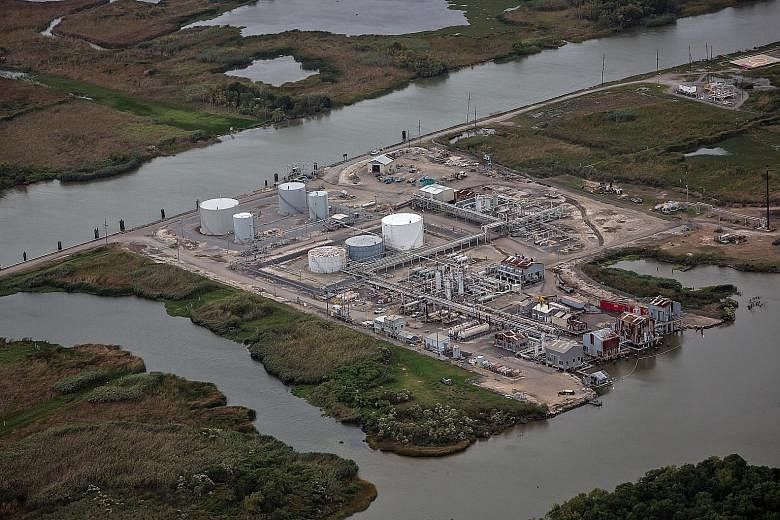WASHINGTON • From a plane 1,500m in the air, it is difficult to make out where Louisiana's coastline used to be.
But follow the skeletal remains of decades-old oil canals, and you get an idea. Once, these lanes sliced through thick marshland, clearing a path for pipelines or ships.
Now they're surrounded by open water, green borders still visible as the sea swallows up the shore.
The canals tell a story about the oil and gas industry's ubiquity in Louisiana history, but they also signal a grave future: US$100 billion (S$134.6 billion) of energy infrastructure threatened by rising sea levels and erosion.
As the coastline recedes, tangles of pipeline are exposed to corrosive seawater; refineries, tank farms and ports are at risk.
"All the pipelines, all the things put in place in the 1950s to the 1970s were designed to be protected by marsh," said Mr Ted Falgout, an energy consultant and former director of Port Fourchon.
Louisiana has an ambitious - and expensive - plan to protect both its backbone industry and its citizens from this threat but, with a US$2 billion deficit looming next year, the cash-poor state can do only so much to shore up its sinking coasts.
That means the oil and gas industry is facing new pressures to bankroll critical environmental projects.
"The industry down there has relied on the natural environment to protect its infrastructure, and that environment is now unravelling," said Mr Kai Midboe, director of policy research at the Water Institute of the Gulf. "They need to step up."
Every year in Louisiana, more than 50 sq km of land is swallowed by the Gulf of Mexico. At Port Fourchon, which services 90 per cent of deepwater oil production, the shoreline recedes by about a metre every month.
Statewide, more than 980km of pipeline could be exposed over the next 25 years, according to one study by Louisiana State University and the Rand Corporation. Private industry owns more than 80 per cent of Louisiana's coast.
The land loss can exacerbate another natural threat: storm-related flooding, like the one that affected the city of Baton Rouge last week.
The oil and gas sector is already losing an average of US$14 billion a year to environmental threats to its infrastructure, according to a study by America's Wetlands Foundation and Entergy. By 2030, those losses could exceed US$350 billion.
The America's Wetlands Foundation has already joined hands with ConocoPhillips, Chevron and CITGO Petroleum to build a 1.6km pilot project to reduce the effect of erosion along the Gulf Intracoastal Waterway, a shipping route used by oil and gas companies.
"I would think that the larger investors in Louisiana would be willing to look at this as part of their long-term business plan," said America's Wetlands Foundation chief Val Marmillion. "We can figure out a way to do these projects."
But so far there is little sign that companies are clamouring to spend the millions - or billions - of dollars needed. BP, Chevron, Royal Dutch Shell and Exxon Mobil declined to comment on the extent of their investments in environmental projects.
Four parishes - Jefferson, Plaquemines, Cameron and Vermilion - are suing dozens of oil companies for money to fund coastal restoration projects in their vicinity.
The suits allege that, over decades, the companies violated their coastal land use permits by not remediating the areas in which they operated.
BLOOMBERG

